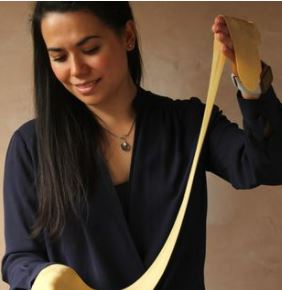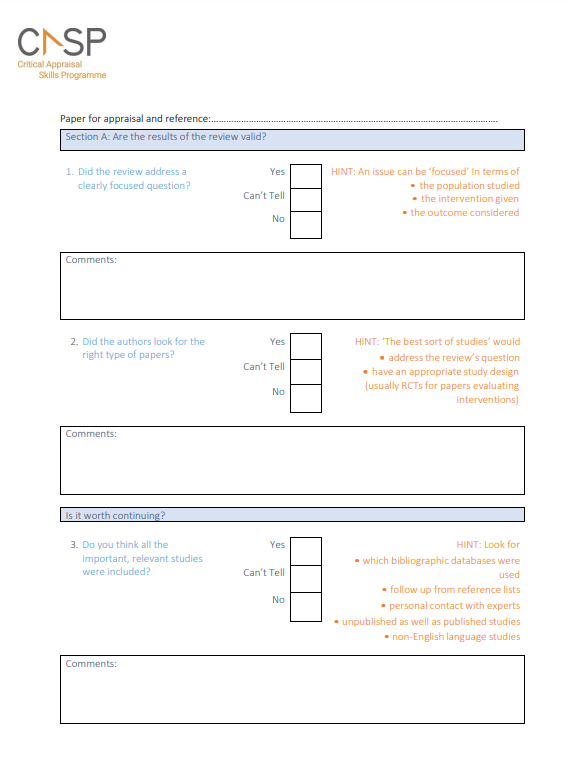This month Dr Pippa Gibson RNutr took over as chair of the MyNutriWeb Journal Club. In this blog she shares her top tips for reading and reviewing a scientific paper to help you prepare for each Journal Club session, giving you the tools to read and understand the latest scientific advances, whilst additionally questioning the methods and analysis to check for bias whilst furthering your own knowledge in the field of nutrition.

If you have never read a scientific paper before, welcome to the Journal Club. A safe space where like-minded people gather together to read research papers and discuss the pros and cons of the research undertaken, whilst furthering our knowledge in the nutrition field. Some of you may have just started your journey into critically appraising other’s work, some of you may have plenty of experience reading papers but have yet to discuss your thoughts with others, and some of you might just be interested in more CPD opportunities. Whatever you are looking to gain, welcome to the club. And there is only one rule of this club to gain entry – read the paper. So, lets discuss how you might approach this if you’re new to this.
1. Give yourself time to read the paper
While this may sound simple, if you’re not used to reading scientific papers this can be a handy tip to ensure you don’t rush the process. Setting some time aside to allow yourself the opportunity to focus on the paper will make the whole process much simpler. I like to block time in the calendar to give myself the chance to really read the paper, as well as be able to read around the subject if I’m not familiar with this area of research, or if the study has been conducted in a format I am not familiar with. Give plenty of time for this if you are new to reading and reviewing papers.
2. Take notes
It might sound obvious to you, but taking notes can be a great way to help you learn. Perhaps it’s an abbreviation you haven’t heard of before, or a method you haven’t previously come across. This could be setting up an electronic template to help you review each paper you read in order to compare and contrast, whilst also being environmentally friendly – there are plenty of systematic review tools available which are detailed at the end of the blog to help you form your own subjective opinion. These are commonly used when undertaking a systematic review, where researches look at multiple different papers around the same subject and investigate to see if there is an overall effect. Call me old fashioned, but I like to print the papers out* and have a hard copy in my hand when critically reviewing, making general notes down the sides of the paper, with a summary of my main thoughts on the very front of the page as my own quick reference. I always like to look up the journal’s impact factor. This is a number assigned to a journal which indicated how many times their papers are cited over a set period of time. Often, the higher the impact factor, the more prestigious the journal is perceived. However, relying solely on the impact factor to assess the quality of the paper isn’t advisable as there may be field-specific journals which score lower due to their specificity. I also like to check out the authors, getting an understanding of the setting in which the research took place, as this can sometimes lead to my first questions, especially when considering dietary related outcomes. This can also disclose if the research has been funded by industry in order to specifically research their product, which, can be a risk of bias in come cases, but not all.
*Sustainability tip: before printing, firstly consider whether it is necessary to print. If so, consider printing in black and white ink rather than colour, use recycled paper and print on both sides (duplex printing) to make printing more sustainable.
3, Skim through the paper at first
I always try to skim through the paper in order to get the right context of the paper, as well as a general overview of what I’m reading. The abstract, introduction and conclusion can be really helpful to better understand the method and results, and can really help me get into the mood for reviewing a paper.
4, Understand the context of the research
The introduction will set the scene as to why the research has been conducted, and what is missing in the field. This could be a great opportunity to further your knowledge in this area by reading some of the papers cited by the authors in order to improve your depth of knowledge, or context on a specific point. I like to make a list of all the papers cited that I want to read – the references at the end of the paper will be key in helping you with this task. However, if you feel the references cited in their paper aren’t what you are looking for, I sometimes like to use PubMed as a way of finding related research. To do this, find the paper on PubMed and on the right-hand side of the page you will find a “similar articles” tab which will link other papers with similar terms, or if you want to see if there is more recent research in the same area, use the “cited by” tab which will pull up any papers which have cited the paper you are currently reviewing and may offer further, more up-to-date- information.
5. Understand the methods
Pay attention to the methods used in the paper, and assess if they are appropriate for the study’s goal, and if the data supports the conclusions drawn. Sometimes a research paper will reference back to an old method, so try reading previous studies by the same research group to understand the steps taken to bring you to the current research. Look at the study design. Is it robust? Is it reliable? Could it have been done to a higher standard e.g. did they include a control arm in order to assess any changes from baseline? Are the methods fully comprehendible so you could recreate the research if you chose to? Do the method introduce bias, whether intentionally or unintentionally? Additionally, it’s always a good idea to have an understanding of the gold standard for the research at hand. For example, the gold standard for dietary assessment is a weighed food diary. However, many high quality research papers do not use the gold standard in order to calculate food intake because it can be off-putting to participants, as well as inadvertently altering the dietary intake through the very process of weighing foods consumed. Therefore, context can be a key factor when assessing methodology – this might be the first study conducted in this area, and therefore it might not be as rigorous as other larger studies, but provides pilot data in which other studies can be developed from.
6. Examine the results
Look at the graphs, figures and tables, checking if there are any supplementary pages to the main article, and try to understand how they relate to the research question. Analyse the results you see yourself, and check if they support the conclusion of the authors, and if the appropriate statistic analysis has been conducted for the type of data collected; I have unfortunately previously seen categorial data analysed as continuous data, a bit of a red flag. Look for areas such as compliance of participants, drop out rates, power calculations for study sample sizes, and consider the clinical relevance of a significant finding.
7. Context and discussion
Evaluate how the results fit into the broader context of the research field. Consider any limitations discussed by the authors, and are there any that you think they may have missed or overlooked themselves. How might you approach the research from a different angle? Are there things you would have done differently, but equally what was done in a way you saw fit?
8. Discuss and review
The best way to further your knowledge it to share your thoughts with others. The MNW Journal Club is a great opportunity for you to participate in this with a wide-ranging audience. If you have a questions about the paper of the month, try to submit a question either beforehand when signing up to the event, or submit a question live during the journal club recording – remember, there’s a good chance that someone else may also be thinking the same thing as you.
9. Practice
In order to become more comfortable and improve your critical appraisal techniques, you need to practice. As part of my PhD I took part in a weekly journal club hosted by my research group, which gave me plenty of practice. Why not try to set up your own journal club with your class mates or co-workers in order to keep furthering your skills as well as knowledge?
10. Read outside your comfort zone
It’s all well and good reading papers which are on your favourite nutritional topics. If you are in a research group you may well focus on a specific research area and become experts in the field. However, it’s a good idea to broaden your horizon when it comes to nutrition research, as so many different things are connected in way you might not have thought of. I am excited to be sharing the journey with you for the 2024 MNW journal club as I will undoubtedly be reading papers I might not have previously thought to read. It’s always surprising when someone asks you a question and you have just happened to have recently read a paper in that area.
If you want to know more about critically appraising papers why not check out MyNutriweb’s recording on top tips for reading and reviewing a paper or if you fancy reading a paper on how to read a paper, you can try these 10 steps by Carey et al1 or the Art of Reading a Journal by Subramanyam2.
Systematic Review Checklist Tools
These can be a handy way to help you read and critically appraise papers in the same format in order to drawn your own conclusions and comparisons:
CASP Systematic Review Checklist
I hope you enjoy 2024’s Journal Clubs, I look forward to sharing these CDP opportunities and widening my own nutritional knowledge alongside you.
References
1. Carey et al. Ten simple rules for reading a scientific paper PLoS Comput Biol. 2020 Jul; 16(7): e1008032. doi: 10.1371/journal.pcbi.1008032
2. Subramanyam. Art of reading a journal article: Methodically and effectively. J Oral Maxillofac Pathol. 2013 Jan-Apr; 17(1): 65–70. doi: 10.4103/0973-029X.110733






